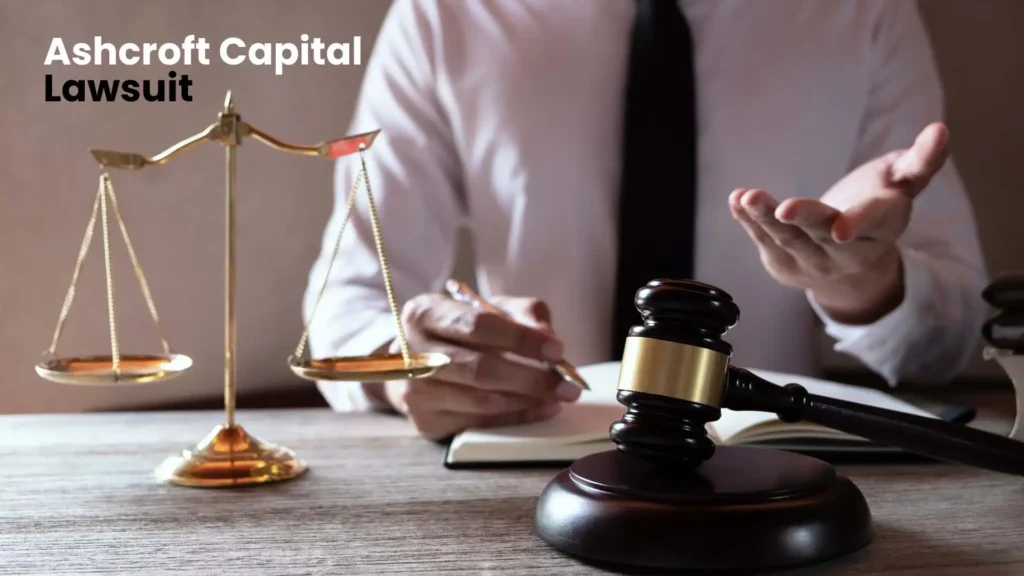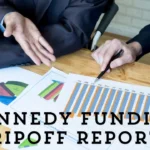In the dynamic world of real estate syndication, where investors pool funds to acquire high-value properties, Ashcroft Capital has long been a standout, managing over $3.7 billion in multifamily assets across the Sun Belt. Founded by Joe Fairless and Frank Roessler, the Texas-based firm has built a reputation for delivering strong returns through value-add strategies, transforming underperforming apartment complexes into profitable ventures. However, the spotlight has shifted from accolades to scrutiny with the emergence of the Ashcroft Capital lawsuit, a high-profile legal battle filed in February 2025 that’s sending shockwaves through the $100 billion syndication industry. Allegations of financial misrepresentation, inflated return projections, and breaches of fiduciary duty have sparked debates about transparency and trust in passive real estate investing. As of September 20, 2025, this case, titled Cautero v. Ashcroft Legacy Funds, involves claims of $18 million in damages, challenging the firm’s practices and raising red flags for investors.
Ashcroft’s Meteoric Rise: A Syndication Powerhouse Under Fire
Ashcroft Capital’s ascent in the real estate world is a tale of ambition and execution, capitalizing on the Sun Belt’s booming markets like Texas, Florida, and Georgia. By acquiring Class B and C apartment complexes, implementing strategic upgrades, and boosting rents, the firm has delivered consistent passive income streams, attracting accredited investors seeking alternatives to volatile stocks. Their investor-first approach—detailed quarterly reports, webinars, and a podcast hosted by Fairless—earned them a loyal following and a portfolio of 22,000 units. Yet, the Ashcroft Capital lawsuit casts a shadow over this success. Filed by 12 accredited investors, the case alleges that Ashcroft’s polished projections masked risks, leading to unexpected losses. The plaintiffs claim the firm’s marketing touted internal rates of return (IRR) inflated by 4–6%, a discrepancy that eroded trust when returns underperformed.
The firm’s growth strategy, while lucrative, leaned heavily on aggressive digital marketing and high-profile branding, positioning Ashcroft as a beacon for passive investors. However, this visibility has a downside: every misstep is magnified. Online forums like BiggerPockets buzz with speculation about the Ashcroft Capital lawsuit, fueled by broader industry woes, such as rising interest rates and declining occupancy in 2024–2025. These economic pressures strained multifamily investments, amplifying investor frustrations. Ashcroft’s model, reliant on hefty capital commitments—often $50,000 minimums—faces criticism for prioritizing sponsor fees over limited partner returns, a tension at the heart of the legal claims. While the firm’s track record boasts a $2 billion portfolio, the lawsuit signals a potential turning point, urging investors to question the fine print behind glossy promises.
Core Allegations: Misrepresentation and Fiduciary Failures
The Ashcroft Capital lawsuit, formally lodged on February 12, 2025, in Texas, centers on accusations that could redefine syndicator accountability. The plaintiffs, per ashcroftcapitallawsuit.com, allege Ashcroft misrepresented projected returns, promising IRRs that outstripped realistic outcomes by significant margins. Marketing materials reportedly downplayed risks like rent declines or renovation cost overruns, leaving investors blindsided when properties underperformed. A key grievance: Ashcroft’s failure to disclose rising capital expenditure needs, which eroded cash flows. The suit also claims breaches of fiduciary duty, asserting that the firm’s fee structures—allegedly favoring sponsors through equity promotes—sidelined investor interests. These charges, echoed in a May 2025 Management Works Media analysis, point to securities law violations, including unsubstantiated projections in offering memoranda.
Discovery documents reveal troubling patterns: emails and calls where Ashcroft reps allegedly painted rosy scenarios without adequate disclaimers, a tactic critics liken to “boiler-room” sales. The plaintiffs, seeking $18 million in damages, argue this lack of transparency violated federal anti-fraud provisions and Texas consumer protection laws. Beyond financial losses, the lawsuit highlights a broader issue: the informational asymmetry between syndicators and passive investors. Ashcroft’s practices, while not unique, reflect an industry where optimistic projections can blur into deception. The case’s outcome, still pending as of September 2025, could set precedents for how syndicators communicate risks, especially as the SEC eyes stricter disclosure mandates.
Ashcroft’s Defense: Pushing Back Against the Claims
Facing the Ashcroft Capital lawsuit, Ashcroft Capital isn’t standing idle. The firm, in statements to The Practical Law in April 2025, denies wrongdoing, asserting that all projections were grounded in market data and accompanied by risk disclosures in offering documents. Their legal team argues that plaintiffs signed agreements acknowledging volatility, and internal audits confirm compliance with SEC regulations. Ashcroft points to its 95% investor retention rate and transparent fee breakdowns as evidence of good faith. In a bold move, the firm has countersued for defamation, seeking $5 million and alleging the plaintiffs exaggerated claims for leverage, per an August 2025 Cooper Magazine update.
Ashcroft’s defense leverages its operational strengths: third-party audits, regular investor updates, and a track record of navigating market downturns. They argue that economic headwinds, like 2024’s 5% interest rate hikes, not mismanagement, drove underperformance. Industry peers, cited in LawGud, note that such lawsuits are common in cyclical markets, where investor expectations clash with reality. Still, critics on platforms like Reddit question whether Ashcroft’s high fees—sometimes 2% annually plus 20% of profits—skewed priorities. The firm’s proactive stance, including enhanced investor webinars in 2025, aims to rebuild trust, but the lawsuit’s shadow lingers.
Industry Ripple Effects: A Wake-Up Call for Syndication
The Ashcroft Capital lawsuit isn’t just about one firm; it’s a bellwether for the syndication industry. A plaintiff victory, as magnochi.com suggests, could erode trust, pushing investors toward conservative vehicles like REITs. Syndicators may respond by adopting stricter models—more conservative projections, third-party audits, or detailed risk disclosures—to avoid similar litigation. The SEC, already scrutinizing private offerings, might impose new rules, increasing compliance costs but leveling the playing field. For investors, the lawsuit underscores due diligence: vet sponsors’ track records, demand audited financials, and consult advisors via NASAA. Ashcroft’s $18 million stake highlights the risks of over-reliance on one syndicator, urging diversification to mitigate exposure.
As the Ashcroft Capital lawsuit unfolds, it’s a stark reminder that real estate syndication, while lucrative, demands vigilance. Investors must prioritize transparency, scrutinize projections, and stay informed through credible sources like court filings or Heralds Post. The case could reshape how syndicators operate, fostering a more accountable industry—or signal caution for those chasing passive income dreams.
Conclusion
The Ashcroft Capital lawsuit of 2025, with its $18 million in alleged damages, challenges the trust underpinning real estate syndication. While Ashcroft Capital defends its transparency and compliance, the accusations of misrepresentation and fiduciary lapses highlight industry vulnerabilities. Investors must navigate this landscape with sharp due diligence, leveraging primary sources like PACER to cut through online noise. As the case progresses, it could catalyze reforms, ensuring syndicators prioritize clarity over charisma. For now, Ashcroft’s saga is a clarion call: in the high-stakes world of multifamily investing, knowledge is the ultimate asset.
Fazit
1. What sparked the 2025 Ashcroft Capital lawsuit?
Investors allege Ashcroft misrepresented returns and hid risks, causing financial losses.
2. Is the Ashcroft Capital lawsuit still active?
Yes, Cautero v. Ashcroft Legacy Funds is ongoing in Texas as of September 2025.
3. How has Ashcroft Capital responded to the claims?
Ashcroft denies misconduct, citing compliant disclosures and countersuing for defamation.
4. What are the main allegations in the lawsuit?
Plaintiffs claim inflated IRR projections, undisclosed fees, and breaches of fiduciary duty.
5. How might the lawsuit impact real estate syndication?
It could drive stricter regulations and transparency, reshaping investor trust and practices.


